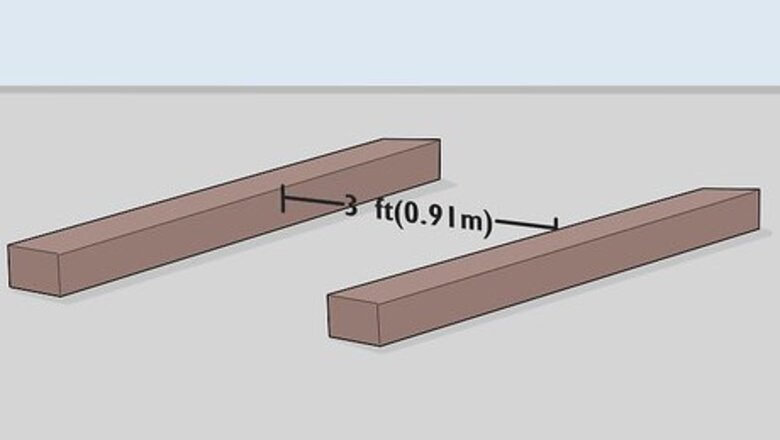
views
Using a Chainsaw

Prop your railroad tie up on two pieces of scrap wood. You’ll want to elevate your railroad tie so your chainsaw doesn’t hit dirt or grass underneath it. You can use two pieces of scrap wood set about 3 feet (0.91 m) apart from each other as a stand. Make sure the area you are working in is free from debris and that the ground is generally even. This will make your work much safer and also easier.
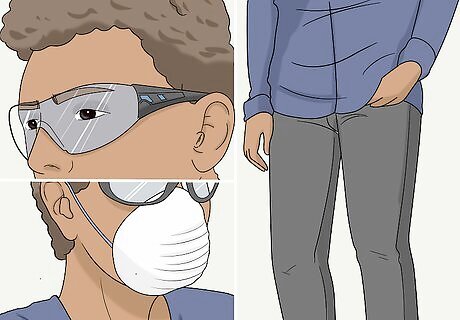
Purchase and wear the proper safety equipment. You should wear safety goggles, long pants, shirts with long sleeves, and ear protection. Using a chainsaw can be dangerous, so it is important to wear the proper safety gear. You’ll need to protect your eyes, ears, and skin from any harm, so covering up as much as you can is important. You may also want to wear a breathing mask since railroad ties often contain chemicals and dust. Wearing chainsaw chaps is recommended for additional protection. You can purchase safety gear at most hardware stores.
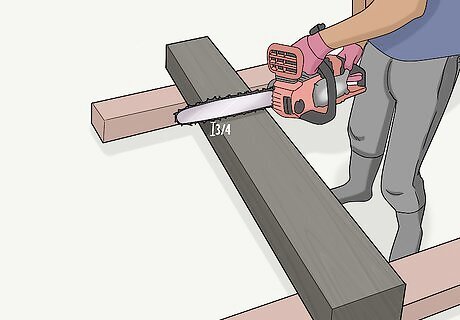
Cut about ¾ of the way through the tie holding your chainsaw steady. You can stand in a squat position over the railroad tie to get leverage and slowly move the chainsaw downward. You’ll want to stop cutting before you reach the bottom of the tie so that your blade does not get stuck in between the two halves. This will also prevent you from cutting through the tie and into the ground, damaging your chainsaw. Railroad ties are tough and hard to cut, so they may require you to change your blade out or sharpen it during the process. Cutting the tie could take a couple of minutes, so take care to work slowly and carefully. You can have a friend help you out by holding the railroad tie steady as you cut, but it is not necessary. If you do have someone help you out, make sure that they are also wearing safety gear and do not get in range of the chain saw blade.

Flip the tie over and finish the cut. Once your railroad tie is cut ¾ of the way, you can flip it over and finish cutting the last ¼. Try to make sure your cuts line up perfectly, so that your chainsaw goes through smoothly. Use caution as you finish up your cut, and work slowly so that you are in control of your chainsaw the entire time you are cutting.
Cutting with a Circular Saw
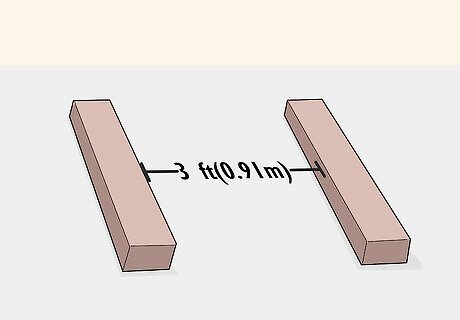
Stand your railroad tie on two pieces of scrap wood. You’ll need to elevate your railroad tie when you use a circular saw to cut. You can set up your scrap wood about 3 feet (0.91 m) apart on the ground to lift it up. Make sure the ground is as evenly as possible when using a circular saw. This will make the cutting proceed more quickly, safely, and smoothly.
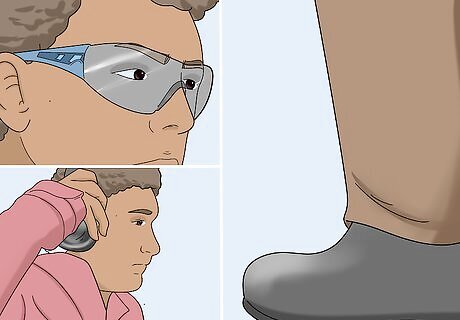
Put on your safety glasses, long pants, and closed toed shoes. Circular saws are dangerous like all power tools, so make sure to pay attention to the task at hand and the way the tie and saw are reacting. Make sure you are wearing the appropriate safety attire — safety glasses, sturdy shoes, and long pants. You might also want to wear a breathing mask to protect your lungs from the dust that your saw will produce. It is better to wear more safety gear than less safety gear. Wear as much as you are comfortable with. You can buy safety gear at most hardware or home goods stores.
Set the blade depth to its maximum. This is achieved by rotating the saw shoe (bed) as close to the arbor (shaft) of the circular saw. First you will have to loosen the mechanism which secures the shoe. If you do not know how to do this, refer to the owner manual for your specific model.
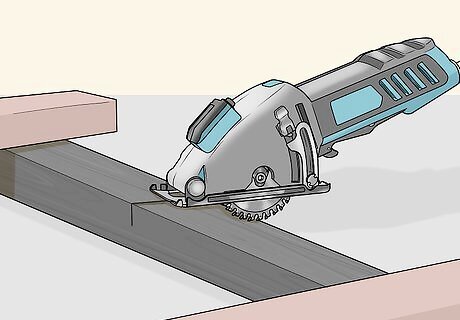
Make a cut on the top portion of the railroad tie. Using your circular saw, cut through part of the tie that is facing upwards. You can cut across the entire tie, going as deep into it as your saw will allow you to. It may be difficult to get your saw through the railroad tie, so work slowly and cautiously.
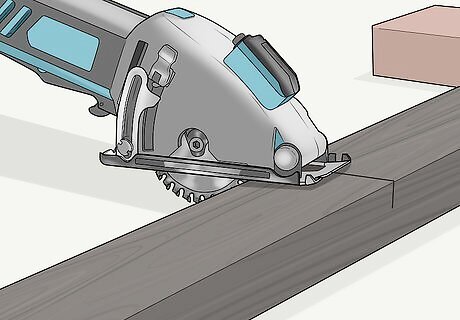
Flip the tie over and make a cut on the bottom. Once your railroad tie is cut on the top, you can flip it over and make an identical cut on the bottom that lines up with the first one. You should put your saw into the tie as deep as it will go, but it is okay if it doesn’t quite reach the first cut.
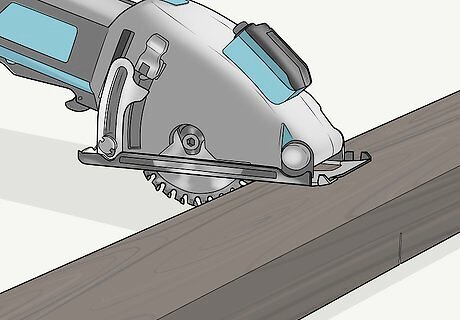
Cut the tie two more times on the uncut sides. You can rotate your tie around to reach the uncut portions and make cuts across each of the sides that you haven’t cut yet. You will again be trying to match up your new cuts with your old cuts. Set the saw depth at its maximum so you saw as deep into the railroad tie as possible. It is fine if it doesn’t quite reach your other cuts. It may be helpful to have someone rotating the railroad tie as you work. That way, you will have to pause less and can line up your cuts more easily.

Stomp on your cut area to break the halves apart. If your cuts haven’t lined up perfectly and there is still a little bit of railroad tie connecting it, you can strike it with your foot to break it apart. You should only do this if there is less than an inch of uncut area in the middle, or else you can hurt yourself. If you don’t want to use your foot, you can use a heavy object like a rock to break it apart. Make sure you are wearing heavy duty shoes or work boots during this step, or you might hurt your foot.















Comments
0 comment